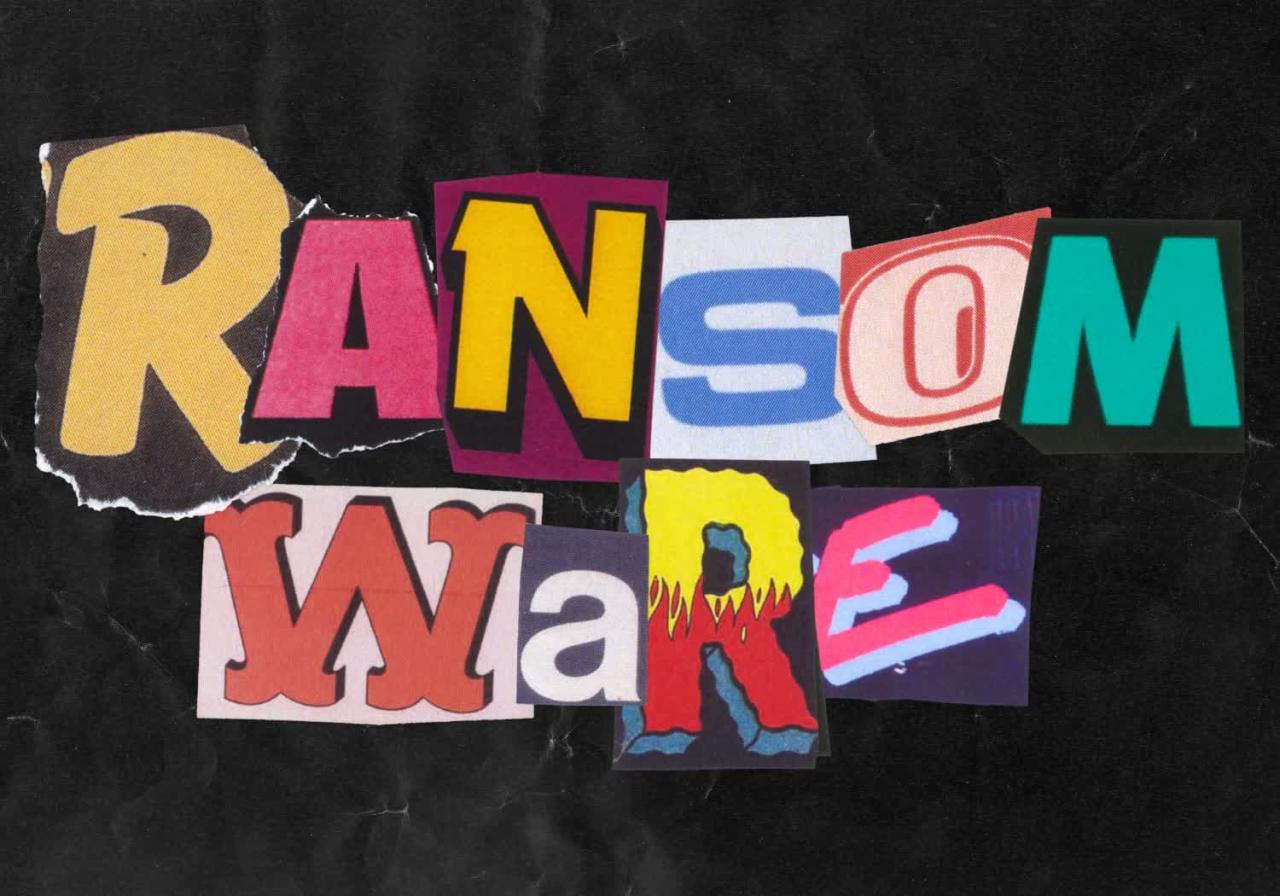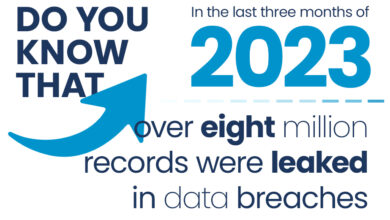
Can Ban on Ransom Payments Block Ransomware Spread?
Can ban on ransom payments block ransomware spread – Can banning ransom payments block ransomware spread? It’s a question sparking intense debate in the cybersecurity world. The idea is simple: cut off the financial incentive, and the attacks should dry up. But the reality is far more complex, involving legal hurdles, economic consequences for businesses and individuals, and the ethical dilemma of forcing victims to shoulder the entire burden of a cyberattack.
This post dives deep into the potential effectiveness, economic impacts, and ethical considerations surrounding a global ban on ransomware payments.
We’ll explore the experiences of countries and organizations that have already experimented with such bans, examining both their successes and failures. We’ll also weigh the pros and cons against alternative strategies, like bolstering cybersecurity defenses and fostering international cooperation. Ultimately, we’ll aim to paint a clearer picture of whether a ban is a viable solution or just a piece of a much larger puzzle in the fight against ransomware.
The Effectiveness of Ransom Payment Bans

Ransomware attacks continue to plague individuals and organizations globally, prompting discussions about the effectiveness of various countermeasures. One such measure gaining traction is the complete ban on ransom payments. While seemingly straightforward, the reality of implementing and enforcing such a ban is far more complex, with potential benefits and drawbacks that require careful consideration.The Impact of Ransom Payment Bans on Ransomware FrequencyA complete ban on ransom payments aims to disrupt the financial incentives driving ransomware attacks.
The theory is simple: if attackers cannot profit from their crimes, the attacks will decrease. However, the effectiveness of this approach is debated. While it might deter some less sophisticated actors, experienced ransomware gangs might adapt by focusing on other monetization strategies, such as data exfiltration and extortion through public data leaks, even if they don’t receive a ransom.Examples of Bans and Their EffectivenessSeveral countries and organizations have implemented policies discouraging or prohibiting ransom payments.
For example, some government agencies in the US have adopted strict policies against paying ransoms. However, assessing the effectiveness of these bans is challenging. While some anecdotal evidence suggests a reduction in attacks following the implementation of such policies within specific organizations, there’s no conclusive, broad-scale data demonstrating a significant decrease in ransomware attacks globally as a direct result of these bans.
The difficulty lies in isolating the impact of the ban from other factors, such as improved cybersecurity practices.Challenges in Enforcing a Global Ban on Ransom PaymentsA global ban faces significant challenges. Enforcing such a ban across diverse jurisdictions with varying legal frameworks and enforcement capabilities is extremely difficult. Furthermore, many ransomware operations originate from countries with weak or nonexistent cybersecurity regulations, making international cooperation crucial but often elusive.
The decentralized and anonymous nature of cryptocurrency transactions, frequently used for ransom payments, also complicates enforcement. Even if a ban is implemented in one country, attackers can easily target organizations in countries without such restrictions.Ban vs. Other Preventative MeasuresWhile a ban on ransom payments can be a useful component of a broader strategy, it’s not a standalone solution.
Improving cybersecurity practices, such as regular software updates, employee training on phishing and social engineering techniques, and robust data backups, are far more effective preventative measures. These proactive approaches reduce the likelihood of a successful ransomware attack in the first place, making the payment of a ransom unnecessary. A multi-layered approach, combining strong cybersecurity defenses with policies discouraging ransom payments, is generally considered more effective than relying solely on a ban.Hypothetical Scenario: Successful and Unsuccessful Ban ImplementationConsider two scenarios: In a successful ban implementation, a coordinated global effort leads to stricter enforcement, decreased cryptocurrency anonymity, and a significant reduction in successful ransomware attacks due to a lack of financial incentive.
This success would likely be accompanied by a significant increase in investment in proactive cybersecurity measures. Conversely, an unsuccessful ban implementation might see a shift in ransomware tactics, with attackers focusing on data exfiltration and extortion, potentially leading to increased data breaches and reputational damage for victims, even without ransom payments. This scenario would highlight the importance of complementary strategies like robust cybersecurity and incident response planning.
The Economic Impact of Ransom Payment Bans

A ban on ransom payments, while aiming to curb the ransomware epidemic, carries significant economic implications for businesses, individuals, and governments. The short-term effects might be jarring, potentially leading to increased losses in some cases, but the long-term effects could foster a more resilient and secure digital environment. Understanding these economic consequences is crucial for policymakers and organizations alike.
Short-Term Economic Effects on Businesses
The immediate impact of a ban on ransom payments for businesses could be a surge in losses from ransomware attacks. Companies that previously opted to pay ransoms to recover data and minimize downtime would now face the full brunt of data loss, system disruption, and the associated costs of recovery. This could include expenses related to forensic investigation, data restoration from backups (if available), rebuilding systems, and potentially legal fees related to data breaches and regulatory compliance.
Smaller businesses, with limited resources and less robust cybersecurity infrastructure, are particularly vulnerable to experiencing significant financial hardship. For example, a small manufacturing company might face production halts, impacting orders and revenue streams, far exceeding the cost of a previous ransom payment.
Long-Term Economic Effects on Businesses
While the short-term picture may be bleak, a ban could incentivize long-term investment in cybersecurity. Faced with the certainty of substantial losses from attacks, businesses may be more inclined to invest in robust preventative measures, including enhanced cybersecurity software, employee training, and regular security audits. This proactive approach could lead to a more secure digital landscape in the long run, reducing the overall cost of ransomware attacks over time.
The long-term economic benefit would be a more resilient and secure business environment, although it requires initial investment and adaptation.
Economic Consequences for Individuals and Governments
The economic consequences extend beyond businesses. Individuals could face significant personal losses from ransomware attacks targeting their personal data, including financial information and sensitive documents. Governments would likely face increased pressure to support victims, potentially leading to higher public spending on cybersecurity initiatives, law enforcement, and victim support programs. The increased burden on public resources could indirectly affect taxpayers.
For instance, a significant ransomware attack on a city’s infrastructure could lead to increased municipal taxes to cover the costs of recovery and remediation.
Debating whether a ban on ransom payments can truly block ransomware spread is complex. Stronger security measures are crucial, and understanding the cloud security landscape is key. That’s why I’ve been digging into bitglass and the rise of cloud security posture management , as robust cloud security is vital in preventing initial infections, which are the root of the problem.
Ultimately, a multi-pronged approach, including improved security practices and potentially legislative action, is needed to effectively combat ransomware.
Impact on Insurance Premiums and Products
A ban on ransom payments would likely trigger a reassessment of cybersecurity insurance policies. Insurance premiums for businesses could rise as insurers account for the increased risk and potential for higher payouts due to the lack of ransom payment as a mitigation strategy. Alternatively, we might see the development of new insurance products specifically designed to cover the costs associated with ransomware attacks in a post-ransom payment ban environment.
These products could incorporate incentives for proactive cybersecurity measures, potentially offering lower premiums for businesses that demonstrate a strong commitment to security best practices.
Economic Costs: Ransom Payment vs. Ban
The decision to pay a ransom or to endure the costs of a ban is complex. The following table illustrates a simplified comparison:
| Cost Category | Ransom Payment Scenario | Ban Scenario | Comparison |
|---|---|---|---|
| Direct Financial Loss (Ransom) | $10,000 – $1,000,000+ (variable, depending on the attack) | $0 | While a ransom payment is a direct cost, it might be less than the costs associated with a ban. |
| Data Loss/Recovery | Potentially minimal, depending on the attacker | Potentially significant, requiring extensive data recovery efforts and potentially irreversible loss | Data loss and recovery costs are significantly higher under a ban. |
| Downtime/Business Interruption | Potentially minimal, depending on the attacker | Potentially significant, leading to lost revenue and productivity | Downtime costs are generally higher under a ban. |
| Legal & Regulatory Fees | Potentially significant, depending on data breach notifications and legal requirements | Potentially significant, depending on data breach notifications, investigations, and legal actions | Legal and regulatory fees could be high in both scenarios. |
| Cybersecurity Investment | Potentially low, with focus on incident response | Potentially high, with focus on prevention and resilience | Investment in cybersecurity is more crucial and potentially higher in a ban scenario. |
The Legal and Ethical Implications of Ransom Payment Bans

Implementing a global ban on ransom payments presents a complex web of legal and ethical challenges. While the intention – to disrupt the ransomware business model – is laudable, the practicalities and moral considerations are far from straightforward. The effectiveness of such a ban hinges not only on international cooperation but also on a careful balancing of individual rights and collective security.
International Legal Challenges in Implementing a Ransom Payment Ban
The primary hurdle in enforcing a global ban lies in the fragmented nature of international law. There’s no single, universally recognized legal framework governing cybersecurity and ransomware attacks. Each nation possesses its own laws regarding financial transactions and criminal activity, leading to inconsistencies in how a ban might be implemented and enforced. For instance, a ban enforced in one country might be circumvented through transactions routed through jurisdictions with less stringent regulations.
This jurisdictional ambiguity creates significant enforcement difficulties and allows for exploitation by cybercriminals. Furthermore, the international cooperation required to track and seize ransom payments across borders is often hampered by differing legal procedures and data-sharing agreements. The lack of a unified approach allows for jurisdictional arbitrage, where actors can exploit differences in legal frameworks to their advantage.
Conflicts Between National Laws and International Legal Frameworks
National laws often prioritize the protection of their citizens and businesses. A blanket ban on ransom payments might conflict with national laws that permit or even encourage certain types of insurance coverage for cyberattacks, including ransom payments. Furthermore, some nations might view the ban as an infringement on their sovereignty, particularly if it necessitates changes to domestic financial regulations or law enforcement procedures.
This potential for conflict highlights the need for careful negotiation and consensus-building among nations before any international ban could be realistically implemented. Existing treaties and international cooperation mechanisms, such as those focusing on mutual legal assistance in criminal matters, would need significant adaptation and strengthening to effectively support a global ban.
Ethical Considerations of Forcing Victims to Bear the Full Cost of Ransomware Attacks
A ban on ransom payments places the entire financial burden of a ransomware attack squarely on the victim. This can have devastating consequences, particularly for small and medium-sized businesses or individuals who may lack the resources to recover from a significant data loss or operational disruption. Forcing victims to absorb these costs raises ethical concerns about fairness and equity.
It could disproportionately impact vulnerable populations and businesses, potentially leading to bankruptcies and job losses. This situation necessitates a discussion about alternative support mechanisms, such as government-funded cybersecurity insurance programs or rapid response teams to mitigate the impact of ransomware attacks, to ensure that victims are not unfairly penalized.
Ethical Implications of a Ban Compared to Paying Ransoms
The ethical debate surrounding ransomware hinges on the dilemma between incentivizing criminal activity (by paying ransoms) and imposing potentially devastating financial consequences on victims (by banning payments). Paying ransoms fuels the ransomware industry, providing a direct financial incentive for further attacks. However, a ban forces victims to shoulder the full cost of the attack, which may be financially crippling.
This comparison highlights the need for a multi-faceted approach that includes not only deterrence but also robust preventative measures, victim support systems, and international cooperation to disrupt the ransomware ecosystem. The ethical choice isn’t simply a binary decision between paying and not paying, but rather a nuanced consideration of the broader consequences for individuals, businesses, and society.
Legal Arguments For and Against a Ban on Ransom Payments
Arguments for a ban often center on the need to disrupt the ransomware business model and reduce the incentive for attacks. Proponents argue that a ban would force cybercriminals to seek alternative revenue streams, ultimately leading to a decline in ransomware activity. They might cite the potential for increased cybersecurity investment as a positive consequence.Conversely, arguments against a ban emphasize the potential for severe financial harm to victims and the practical challenges of enforcement.
Opponents argue that a ban would be difficult to implement effectively on a global scale and could lead to increased criminal activity as ransomware actors seek alternative methods of extortion. They might highlight the lack of adequate support systems for victims facing significant financial losses due to ransomware attacks.
Alternative Strategies to Combat Ransomware: Can Ban On Ransom Payments Block Ransomware Spread
Ransomware remains a significant threat, and while banning ransom payments might seem like a straightforward solution, it’s not a silver bullet. A multi-pronged approach is crucial, focusing on prevention, preparedness, and proactive measures to effectively combat ransomware attacks. This requires a shift from reactive responses to a more robust, preventative cybersecurity strategy.
Cybersecurity Awareness Training and Improved Security Protocols
Effective cybersecurity awareness training is paramount. Employees are often the weakest link in the security chain, falling victim to phishing scams and social engineering tactics that deliver ransomware payloads. Training should cover identifying phishing emails, recognizing malicious links and attachments, and understanding the importance of strong passwords and multi-factor authentication (MFA). Beyond training, organizations must implement and rigorously enforce robust security protocols, including regular software updates, network segmentation, and the use of firewalls and intrusion detection systems.
This layered approach significantly reduces the attack surface and makes it harder for ransomware to spread. For example, a well-designed security awareness program at a financial institution might include simulated phishing attacks to test employee vigilance and provide immediate feedback on their responses. Following this, implementing MFA across all systems would add another significant layer of protection.
Robust Data Backup and Recovery Systems, Can ban on ransom payments block ransomware spread
Having a robust data backup and recovery system is not just a best practice; it’s a necessity. Regular, automated backups to offline or air-gapped storage are critical. This ensures that even if a ransomware attack encrypts your data, you have a clean copy to restore from, minimizing downtime and data loss. The recovery process itself should be thoroughly tested and documented to ensure a smooth and efficient restoration in the event of an attack.
Consider the example of a hospital: a robust backup and recovery system is not just about preserving patient records; it’s about ensuring the continued operation of life-critical systems. A failure in data recovery could have catastrophic consequences.
Advanced Technologies: Blockchain and AI
Emerging technologies like blockchain and AI offer promising avenues for ransomware mitigation. Blockchain’s immutability can be leveraged to create tamper-proof backups and audit trails, making it harder for attackers to manipulate data or claim they have encrypted it. AI, on the other hand, can be used to detect anomalous behavior indicative of a ransomware attack in real-time, enabling faster response and containment.
For instance, AI-powered threat detection systems can analyze network traffic and identify suspicious patterns, potentially alerting administrators before a ransomware attack fully unfolds. Blockchain could be used to create a decentralized and secure system for verifying the authenticity of software updates, preventing the distribution of malicious code.
Debating whether a ban on ransom payments would truly curb ransomware is tricky; the financial incentive is a huge driver. But building robust, secure systems is key, and that’s where understanding the evolving landscape of application development comes in – check out this insightful piece on domino app dev, the low-code and pro-code future , for a glimpse into how we can better protect ourselves.
Ultimately, strong security practices, alongside potential payment restrictions, might offer the best defense against ransomware attacks.
Best Practices for Minimizing Ransomware Vulnerability
A comprehensive strategy requires a combination of technical and procedural measures. Organizations should adopt a layered security approach, combining multiple security controls to create a robust defense.
- Implement strong password policies and multi-factor authentication.
- Regularly update software and operating systems.
- Conduct regular security awareness training for all employees.
- Segment your network to limit the impact of a breach.
- Use robust antivirus and anti-malware software.
- Implement data loss prevention (DLP) measures.
- Regularly back up your data to offline or air-gapped storage.
- Develop and test an incident response plan.
- Employ network monitoring and intrusion detection systems.
- Consider using advanced technologies like AI and blockchain for enhanced security.
The Role of International Cooperation
Ransomware attacks transcend national borders, making international cooperation absolutely crucial in combating this growing threat. A single, isolated nation’s efforts are unlikely to significantly curb the activities of sophisticated, globally-distributed ransomware gangs. Effective prevention and response require a coordinated, global strategy.Information sharing and collaborative efforts are essential for improving the effectiveness of ransomware prevention and response. This includes sharing threat intelligence, such as details on new ransomware variants, attack techniques, and the identities of malicious actors.
Joint investigations across borders allow law enforcement agencies to build stronger cases and bring perpetrators to justice. Furthermore, coordinated responses to large-scale attacks can minimize damage and disruption.
Information Sharing Mechanisms
Effective information sharing requires established channels and agreements between nations. This might involve formal treaties, informal agreements, or participation in international organizations dedicated to cybersecurity. Sharing indicators of compromise (IOCs) – specific pieces of data that indicate a compromise has occurred – allows countries to proactively defend against known threats. Real-time sharing of information during an active attack is equally vital for coordinated response efforts.
For example, a country facing a large-scale ransomware attack can alert its international partners, allowing them to bolster their own defenses and potentially assist in mitigating the impact.
The Role of International Organizations
International organizations play a vital coordinating role in the fight against ransomware. Organizations like Interpol, Europol, and the Cybersecurity and Infrastructure Security Agency (CISA) in the US facilitate information sharing, coordinate joint investigations, and develop best practices for ransomware prevention and response. These organizations provide a platform for countries to collaborate, share expertise, and develop standardized approaches to tackling this global problem.
They can also assist less technologically advanced nations in building their cybersecurity capabilities.
Obstacles to International Cooperation
Despite the clear need for international cooperation, several obstacles hinder progress. Differing legal frameworks and data privacy regulations can complicate the sharing of sensitive information across borders. Jurisdictional issues can make it difficult to prosecute cybercriminals who operate across multiple countries. Furthermore, a lack of trust and political tensions between nations can impede collaborative efforts. Finally, resource disparities between countries can create an uneven playing field, with some nations having more advanced capabilities than others.
Examples of Successful International Collaborations
While dedicated ransomware collaborations are still developing, successful international collaborations in fighting other forms of cybercrime provide valuable models. Operation takedown operations targeting botnets or infrastructure used by cybercriminals often involve the coordinated efforts of multiple law enforcement agencies from different countries. The dismantling of the GameOver Zeus botnet, a large-scale operation involving law enforcement agencies from several countries, serves as a compelling example of what can be achieved through international cooperation.
This involved seizing servers, disrupting the botnet’s operations, and ultimately leading to arrests. These successful strategies, involving intelligence sharing, coordinated takedowns, and joint prosecutions, can be adapted and applied to the fight against ransomware.
End of Discussion
So, can a ban on ransom payments truly stop the spread of ransomware? The answer, it turns out, isn’t a simple yes or no. While the intention is laudable – to starve the attackers of their funds – the reality is far more nuanced. A ban faces significant challenges in enforcement and implementation, and could potentially shift the economic burden unfairly onto victims.
A multi-pronged approach, combining a ban with stronger cybersecurity practices, international cooperation, and robust data backup strategies, appears to be a more effective, albeit more complex, solution. The fight against ransomware is a marathon, not a sprint, and requires a comprehensive strategy.
Expert Answers
What are the potential legal ramifications for individuals or businesses who
-do* pay a ransom, even if it’s illegal?
This varies greatly by jurisdiction. Some countries actively prosecute those who pay ransoms, viewing it as funding illegal activity. Others are more lenient, recognizing the pressure victims face. It’s crucial to consult legal counsel to understand the specific laws in your region.
How effective are alternative methods like improved cybersecurity practices compared to a ban?
Improved cybersecurity is arguably more effective in the long run. A ban only addresses the symptom, not the cause. Stronger security measures, including employee training, robust backups, and multi-factor authentication, proactively reduce vulnerability to ransomware attacks.
What role does insurance play in this debate?
Cybersecurity insurance is becoming increasingly important. A ban might lead to higher premiums or the development of new insurance products that exclude ransomware payouts, shifting the financial burden to insurers.





